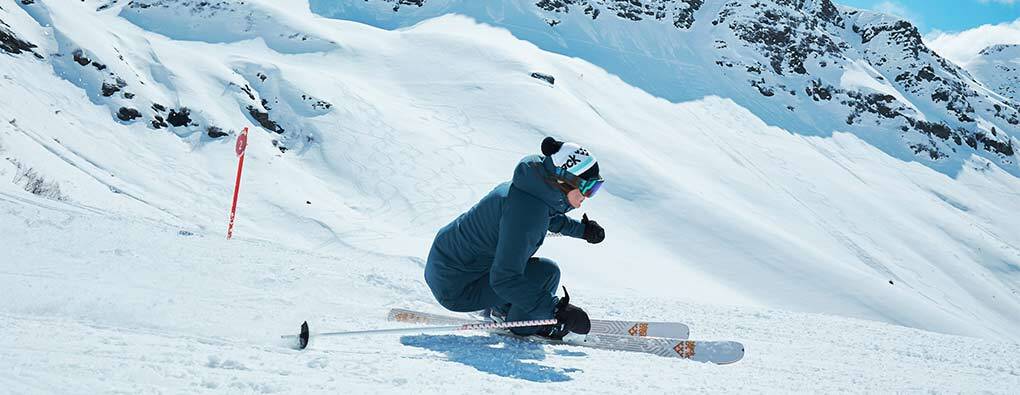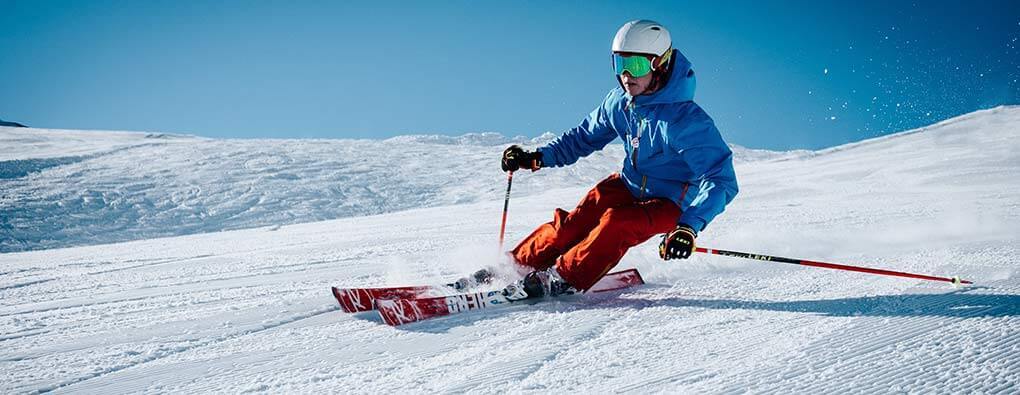Purchasing Skis for Novices
If you're new to skiing and prepared to acquire your initial pair of skis, this guide will steer you correctly. To simplify the process, we'll assist you in determining the ideal type of skis for your needs, the appropriate length, and offer some additional insights on ski width.
Prior to concluding your decision, it is crucial to search for skis suitable for your capability level within the novice category. This search will lead you to skis crafted for greater forgiveness and ease of control. Novice skis also come with bindings that are adjustable in size and uncomplicated to operate.
Owning your personal pair of skis enables you to become accustomed to their feel and response, which can be a significant advantage compared to renting them.
PISTE SKIS - Premier carving skis for groomed pistes
As implied by the name, these skis are meant for on-piste use. Novice skiers often start out on-piste where the basics are learned, making Piste skis a suitable option. Even after mastering the simple slopes, Piste skis can help you progress further. They typically feature a narrow width that enhances their ability to grip the snow.
ALL MOUNTAIN SKIS - The Optimal All-round Skis

These adaptable skis are designed for varied conditions. They excel on the piste but are also capable of handling some off-piste skiing. If you've skied a number of times and desire skis not limited to on-piste activities, then All Mountain skis may be suitable for you. They are engineered with a narrow to average width to balance gripping firm snow on-piste and managing soft, bumpy snow off-piste.
Purchase your new All Mountain Skis
SPECIALISED SKIS
Other specialised options include Park, Racing, Freeride, and Touring skis. These are typically reserved for more adept skiers. If this interests you, our Purchasing Skis for Experienced Skiers contains more elaborate details.
Determining the Right Ski Length
In selecting your ski length, your height and skill level are essential. As a novice, opting for skis that align with your nose height is advisable. Each ski model comes in multiple lengths, so select one that is closest to your recommended length (a variance of 3 cm longer or shorter is acceptable).
The size chart shows that less skiing experience suggests shorter skis, facilitating easier control which is vital during the learning phase.
Your weight serves as a secondary consideration for the appropriate size. If your weight significantly deviates from the average, shorter or longer skis should be considered. Heavier individuals might benefit from longer skis, while lighter individuals might prefer shorter ones.
This image illustrates the ski length for a novice skier
| All Mountain/Piste Skis | |
| First-timer | your height -20 cm |
| Beginner | your height -15 cm |
| Intermediate | your height -10 cm |
| Advanced | your height -5 cm |
| Expert | your height |
Ski Width
The ski's width is an indicator of their performance across various terrains. The common principle is that narrow skis suit hard snow, while wider ones are better for soft snow. Ski width is specified in three figures representing the tip, waist, and tail measurements.
The waist width is the most informative measurement and is consistently the middle figure. Example: 132/78/113
This detail is listed on our website under the specifications for each ski.
Skis with waist widths between 70 to 82mm are ideal for those spending the majority of time on-piste, as they are specially crafted to hold firm snow, which makes them perfect for novice skiers.
Other Ski Gear
Ski Boots
Arguably the most crucial piece of gear for a ski trip is your ski boots. Our Buying Ski Boots Guide covers everything, but here’s some essential information to get started.
Ski boot sizes are measured in centimetres and relate to the entire length of the foot from heel to toe. To obtain your precise size, measure your feet using a tape measure or ruler. Apart from size, every boot has a flex value indicating the flexibility of the outer shell. For comfort, novices should look for boots with a flex rating of 60-90. Detailed boot flex information is available in the Boot Flex Guide.
Tip: Are your ski boots uncomfortable? Ensure that ski trousers are not tucked into the boots. Only your foot and tall ski socks should be inside. High-quality ski socks prevent blisters, discomfort, or cold toes.
Ski Poles
Ski poles assist in mobility on flat terrains and provide stability. A round plastic disc typically found at the bottom stops the poles from sinking too deeply into the snow. The Ski Pole Length Size Chart helps determine the appropriate pole length based on height.
Helmets
Unlike 20 years ago, most skiers today wear helmets regardless of their expertise level. Helmets not only provide warmth but are crucial for ensuring safety.
Ski helmets are designed differently to endure multiple impacts, unlike skate or bike helmets, which are unsuitable alternatives.
Further information can be found in our guides on How to wear your helmet and Lifespan of helmets.
Goggles
Goggles will certainly enhance your ski holiday experience. They safeguard your eyes from bright sunlight, harsh wind, or snow whilst enhancing vision. Discover more in our guide The ultimate guide to ski and snowboard goggles.



